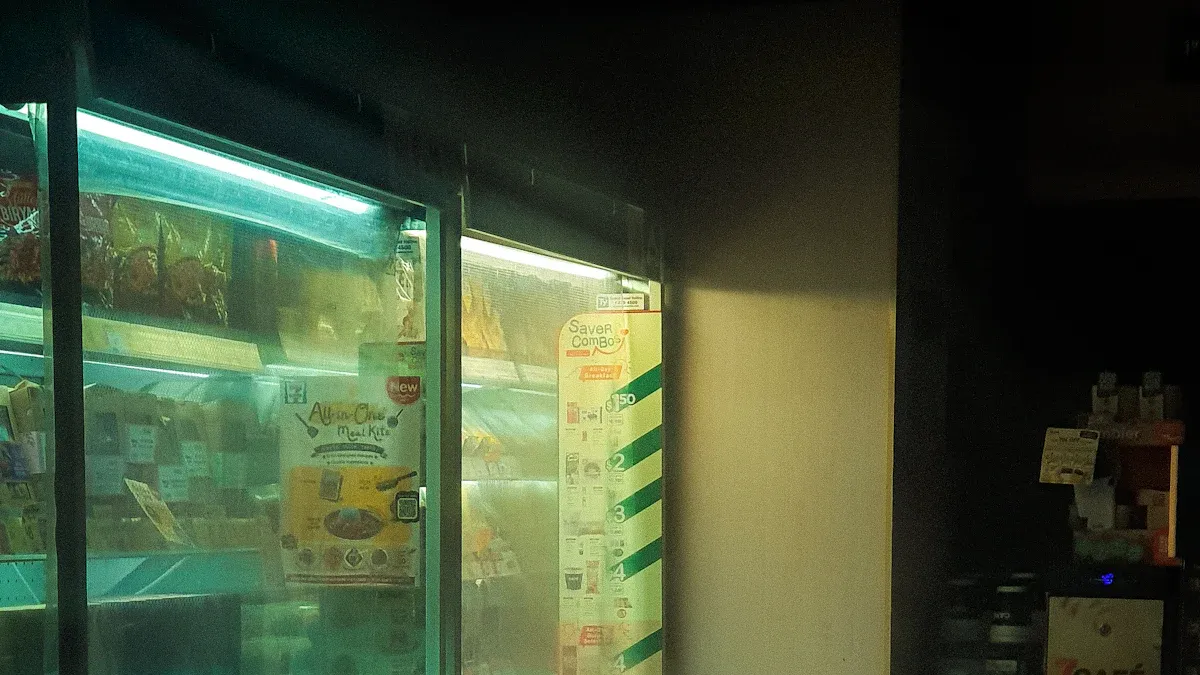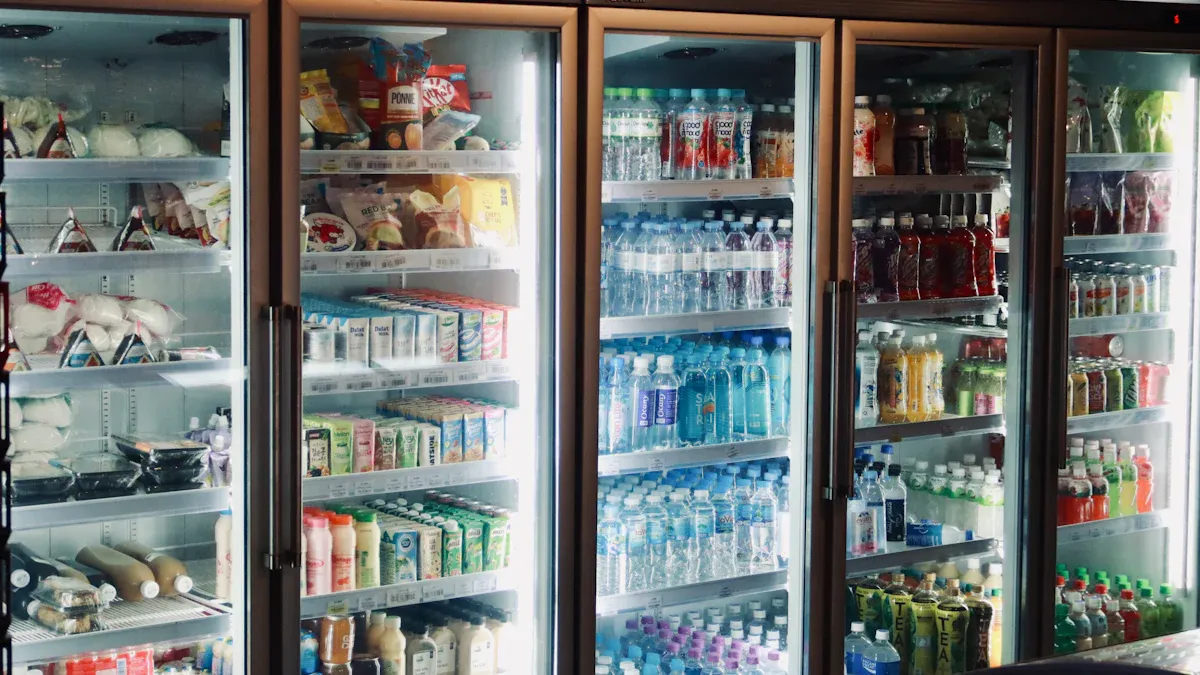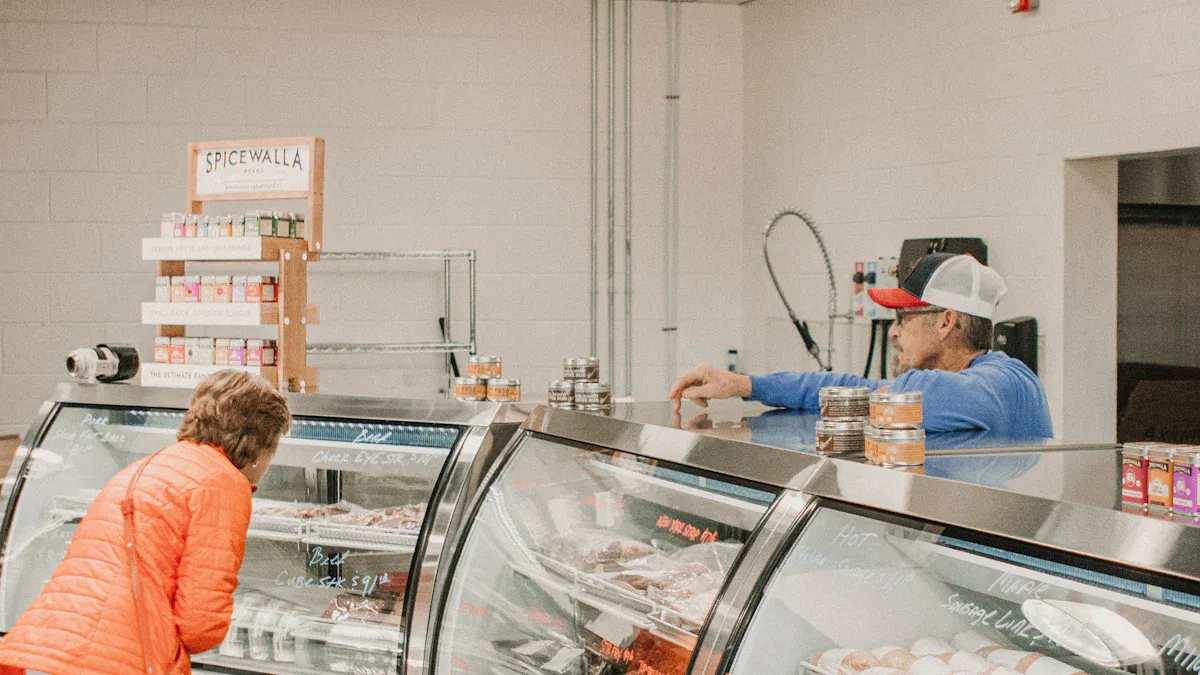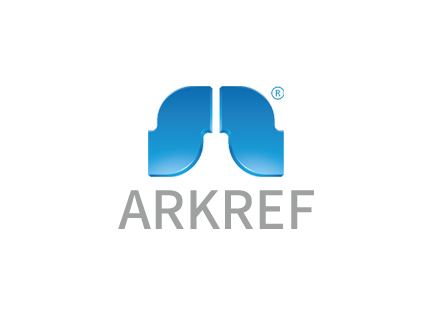Understanding Display Walk-In Coolers and Their Role in Commercial Spaces

A display walk in cooler is a big, insulated fridge. It keeps food cold and safe. It also lets people see and grab products easily. A steady temperature in a commercial walk-in cooler stops food from going bad. It also helps keep food safe to eat. Many places use a walk in cooler, like:
Delis and sandwich shops
Convenience stores
Juice bars and cafes
Supermarkets and liquor stores
Taking care of a walk in cooler and having good insulation keeps food fresh. It also helps food last longer.
Key Takeaways
Display walk-in coolers have glass doors. People can see products without opening the door. This saves energy and keeps food fresh.
Strong insulation and self-closing doors keep cold air inside. This helps businesses save money. It also keeps food safe.
These coolers are great for stores and restaurants. They make products easy to find. They also help lower food waste.
Digital temperature controls and alarms help staff. They keep food at the right temperature. They also help follow safety rules.
Regular maintenance is important. Picking the right size and spot helps the cooler last longer. It also helps it work well.
Display Walk In Cooler Overview

What Is a Display Walk In Cooler
A display walk in cooler is a big, cold room with insulation. It keeps food and drinks cold for businesses. People can see inside the cooler without opening the door. This helps keep the temperature steady. The main job of a display walk in cooler is to store food and let people see it. Glass doors or panels let you look at the products. You do not have to open the door to check what is inside. This saves energy and keeps food fresh. Grocery stores and restaurants use these coolers to keep food safe.
Display walk in coolers have strong insulation to keep cold air inside. Thick panels stop heat from getting in. This helps save energy and keeps food at the right temperature. Many commercial walk-in cooler models have digital controls. These controls make it easy to set the temperature. They help businesses keep food safe and protect their products.
Tip: Display walk in coolers often have doors that close by themselves. This stops cold air from escaping and keeps the inside cold.
How It Differs from Standard Walk In Cooler
A display walk in cooler is different from a standard walk in cooler. The biggest difference is that you can see inside display models. They have glass doors or panels. Standard walk in coolers have solid doors and walls. You cannot see the food inside them. Display walk in coolers are better for stores where people need to look at products.
The way they are built is also different. Display walk in coolers use thick, strong panels with an R-32 rating. These panels keep the cold in and save energy. The panels have UL and NSF certifications. This means they are safe and meet health rules. Strong hardware and self-closing doors make these coolers last longer and work better.
Feature | Description |
|---|---|
Insulation Panels | 4-inch thick, high-density panels with R-32 rating for superior temperature retention |
Panel Certification | UL/NSF-approved panels |
Door System | Self-closing door with cam-lift hinges and NSF vinyl gasket for tight seal |
Hardware | Heavy-duty hardware for structural integrity |
Application | Designed for mortuary and specialized refrigeration needs |
Warranty | 50-year thermal panel warranty, 15-year structural warranty |
Standard walk in coolers use flexible PVC strip curtains instead of hard panels. These curtains are made from clear PVC vinyl strips. They are USDA certified and follow the Energy Act of 2007. The strips work in very cold places, even down to -40°F. They help save energy by stopping cold air from escaping. This makes standard walk in coolers easy to set up and change. But you cannot see the products as well as in display models.
Standard walk in coolers are good for storage and saving energy.
Display walk in coolers are good for seeing and grabbing products.
Both types help businesses keep food cold, but they are used for different reasons.
A commercial walk-in cooler is important for food safety and storage. Businesses pick the type that fits their needs best. Display walk in coolers are great when customers need to see and pick products. Standard walk in coolers are better for storage in the back.
Features
Insulated Panels
A walk in cooler uses insulated panels to keep the cold air inside. These panels have thick foam cores and strong outer layers. The panels stop heat from entering the walk in cooler. This helps keep food and drinks at the right temperature. Many panels have a high R-value, which means they work well for temperature-controlled storage. Some panels use special materials that last a long time and resist damage. Good insulation saves energy and helps businesses lower their costs. The panels also help keep the walk in cooler quiet and clean.
Display Doors
Display doors are a key part of a walk in cooler. They let people see the products without opening the door. This helps keep the cold air inside and saves energy. Many display doors use advanced glass, such as Low-E glass. This glass has a thin metallic coating that reflects heat but lets light pass through. Some display doors have double or triple-pane glass with argon gas between the layers. These features make the walk in cooler more efficient and keep products visible. Some display doors use special frames that stop heat from moving through the edges. Bright LED lights inside the walk in cooler make products easy to see and use less energy than old lights. Stores can choose from many types of glass, like tempered, laminated, or tinted, to fit their needs. Triple-pane glass doors are common in merchandiser freezers because they show products well and waste less energy.
Tip: Self-closing display doors help keep the walk in cooler cold and reduce energy loss.
Temperature Controls
A walk in cooler needs good temperature controls to keep food safe. Many coolers use digital controls that show the exact temperature. Staff can set the right temperature for each product. This helps with food safety and keeps products fresh. Some walk in cooler models have alarms that warn if the temperature changes. Self-closing doors also help keep the temperature steady. These features make it easy for businesses to manage their walk in cooler and protect their products.
Commercial Walk-In Cooler Uses

Display walk in coolers have many jobs in businesses. They help keep products fresh and easy to get. These coolers also make food safer and cut down on waste. Many types of businesses use commercial walk-in cooler units every day. Here are some ways different places use these coolers.
Grocery Stores
Grocery stores use walk in cooler units for dairy, meat, produce, and drinks. Workers sort products by type and date. Shoppers look through glass doors and pick what they want. This keeps food cold and stops it from going bad. Staff can restock shelves fast because items are easy to see. Stores use cold storage for big shipments and special items. A commercial walk-in cooler helps stores track inventory and lose less food.
Restaurants and Cafes
Restaurants and cafes need walk in cooler systems for daily food prep. Chefs keep veggies, sauces, and desserts cold until needed. This keeps food fresh and ready to use. Staff can check supplies quickly and plan meals better. Display doors help workers find things fast, saving time when busy. A commercial walk-in cooler helps restaurants follow food safety rules. Good temperature control stops bacteria and keeps food safe.
Food Service and Retail
Food service and retail shops use walk in cooler units for many things. Bakeries keep dough and pastries cold before baking. Convenience stores show drinks and snacks for quick sales. Florists use cold storage to keep flowers fresh. These businesses need commercial walk-in cooler units to work well and keep customers happy. Easy access and clear views help staff serve people faster. Cold storage makes products last longer and cuts down on waste.
Note: Walk in cooler units are important in many businesses. They help keep food safe, stop spoilage, and make work easier.
Walk In Cooler Benefits
Product Visibility
A walk in cooler with glass doors lets people see inside. Customers and workers do not need to open the door. This keeps cold air in and saves energy. Stores can show fresh food, drinks, and snacks. Shoppers can find what they want quickly. Workers can check shelves fast. Bright LED lights make products easy to see. Good product visibility helps stores sell more and waste less.
Accessibility
A walk in cooler is easy for everyone to use. Wide doors and open space help people move fast. Some models follow ADA rules so all people can reach items. Self-closing doors keep cold air in and let people enter quickly. Workers can restock shelves without blocking the view. Customers have a better shopping trip.
Tip: Pick a walk in cooler with shelves you can move. This helps fit different products and makes things easier to reach.
Food Safety
A walk in cooler keeps food safe by staying cold. Digital controls help workers set and check the temperature. Alarms warn if it gets too warm or cold. This stops bacteria from growing. Many walk in cooler units use safe materials that are simple to clean. The equipment meets strict food safety rules. Here are some common certifications:
Certification/Standard | Purpose/Description |
|---|---|
NSF | Makes sure equipment is safe and easy to clean |
UL | Checks if the equipment is safe to use |
ETL or CSA | Shows the equipment saves energy and is safe |
HACCP readiness | Means the equipment meets health inspection rules |
ADA compliance | Makes sure everyone can use the cooler |
NSF certification means the walk in cooler is simple to clean and helps stop germs.
ETL certification shows the walk in cooler is safe to use.
These features help businesses follow health rules and keep food safe.
Operational Efficiency
A walk in cooler helps workers do their jobs faster. Staff can find and restock items quickly. The cooler keeps food fresh longer, so stores throw away less. Energy-saving parts, like thick insulation and self-closing doors, lower bills. Digital controls make it easy to use the walk in cooler. Strong parts and easy-to-clean surfaces save time. Stores can help more customers and waste less food.
Choosing a Display Walk In Cooler
Size and Capacity
Picking the right size and capacity for a walk in cooler is important. It helps a business keep products safe and easy to find. Owners should think about how much food or drink they need to chill each day. The table below lists common unit types and what to think about:
Unit Type | Primary Use Case | Typical Size | Key Factors to Consider |
|---|---|---|---|
Walk-In Coolers/Freezers | Bulk ingredient storage, long-term holding | Large, often custom-sized | Capacity, insulation quality (R-value), door durability |
A walk in cooler works well when it fits the space and meets the business’s needs. Many businesses use walk in coolers with other fridges. This helps staff get items fast and keeps the kitchen running well. Owners should also check the insulation and make sure the doors are strong.
Energy Efficiency
Energy efficiency is important for every walk in cooler. Good insulation and tight doors keep cold air inside. This lowers energy use and saves money. Many walk in coolers have LED lights and digital controls to save energy. Some models have special glass doors that block heat but let people see inside. These features help businesses spend less on energy and help the planet. Owners should look for units with high R-value panels and energy-saving parts.
Tip: Picking a walk in cooler that saves energy can lower costs over time and help the environment.
Placement
Putting a walk in cooler in the right spot matters a lot. Owners should place the unit where air moves well and away from heat. The walk in cooler should be easy for staff to reach but not block busy spots. Putting it near other kitchen gear can help work go faster. The floor must be flat and strong enough to hold the weight. Good placement helps the walk in cooler work better and last longer.
Maintenance
Regular care keeps a walk in cooler working for many years. Most good units last 10 to 15 years if cared for well. Staff should check the system often and fix problems fast. Key care steps include:
Do regular checkups and inspections.
Set up, fix, and take care of equipment as needed.
Keep good records of all work done.
Always follow safety and building rules.
Work with experts to avoid stopping business.
A well-cared-for walk in cooler stays safe and reliable. Regular care also keeps energy use low and stops big repairs.
Display walk in cooler units are very important in stores and restaurants. They give many helpful features:
You can see products easily, so more people buy them.
The cooler keeps food cold and safe to eat.
It can hold a lot, which helps the business run well.
The strong build makes cleaning simple and lasts a long time.
Using less energy saves money as time goes on.
Owners should think about what they need and look at different choices. Some walk in cooler models use natural refrigerants for better results and future use. If you want expert help, companies like OneEvent Technologies can watch your cooler and help it work safely and well.
FAQ
What is the main difference between a display walk-in cooler and a standard walk-in cooler?
A display walk-in cooler has glass doors or panels. People can see products inside without opening the door. A standard walk-in cooler uses solid doors and walls. It works best for storage, not for showing products.
How often should a business clean a display walk-in cooler?
Staff should clean the cooler at least once a week. They must wipe shelves, doors, and floors. Regular cleaning keeps food safe and helps the cooler last longer.
Can a display walk-in cooler help save energy?
Yes. Glass doors and strong insulation keep cold air inside. LED lights use less power. Self-closing doors also help reduce energy loss.
What types of products work best in a display walk-in cooler?
Display walk-in coolers work well for drinks, dairy, produce, and snacks. Stores often use them for items that customers buy often. Clear doors help shoppers find what they need fast.
How long does a display walk-in cooler usually last?
Most display walk-in coolers last 10 to 15 years. Good care and regular maintenance help them work longer. Quality parts and strong panels also add to their lifespan.
See Also
A Complete Guide To Selecting The Best Walk-In Cooler
Professional Advice To Maximize Walk-In Chiller Performance
Steps To Choose The Right Walk-In Cold Storage Room
A Clear Explanation Of How Cold Rooms Operate Effectively
Transforming Industrial Storage Methods With Modern Cold Rooms

